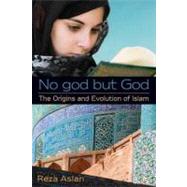
Note: Supplemental materials are not guaranteed with Rental or Used book purchases.
Purchase Benefits
What is included with this book?
| Religion in Pre-Islamic Arabia | p. 1 |
| The World Into Which Muhammad Was Born | p. 13 |
| Muhammad in Mecca | p. 20 |
| Muhammad in Medina | p. 46 |
| After Muhammad | p. 71 |
| The Meaning of Jihad: Definition and Origin | p. 106 |
| Muslim-Jewish Relations | p. 114 |
| Women in Islam | p. 125 |
| The Future of Islam | p. 137 |
| Chronology of Key Events | p. 141 |
| Map | p. 143 |
| Glossary of Key Islamic Terms | p. 145 |
| Works Consulted | p. 153 |
| Index | p. 161 |
| Table of Contents provided by Ingram. All Rights Reserved. |
The New copy of this book will include any supplemental materials advertised. Please check the title of the book to determine if it should include any access cards, study guides, lab manuals, CDs, etc.
The Used, Rental and eBook copies of this book are not guaranteed to include any supplemental materials. Typically, only the book itself is included. This is true even if the title states it includes any access cards, study guides, lab manuals, CDs, etc.